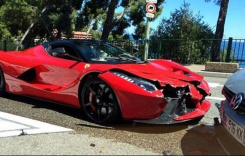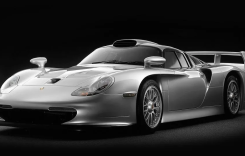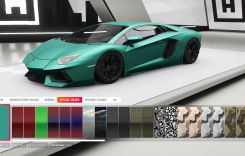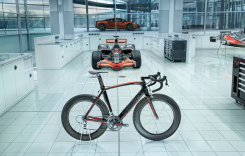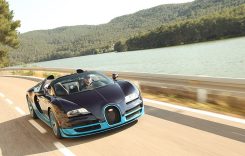The Honda CRF450X holds no undisclosed secrets, no mind-bending upgrades and no major transformations. What it does hold is a fat stack of off-road titles, particularly from the desert. Honda has long been King of Baja with its red racers, and the 450X is the current Honda of choice for the iconic 1X racers. With Yamaha upping the game from Japan, we needed to include the venerable Honda in this shootout to see what has given it such staying power across the past decade.

Big Red makes use of the Unicam engine design. It’s the only bike that doesn’t use a 95mm x 63.4mm bore and stroke. Honda employs a 96mm bore and retains a 40mm flat-side Keihin carburetor for fuel delivery. With only 1.9 gallons on tap, the CRF falls short in terms of range, and that’s something we noted during our long days. One thing we particularly like about the Honda is how quickly it fires to life. With the exception of the EFI-equipped KTM, the Honda is most willing to get underway. Like the rest of the bikes it has a kick start in the case of a dead battery.
The Japanese mill cranks out slightly higher dyno numbers than the Yamaha with 29.41 lb-ft of torque and 41.98 horsepower. It’s clear from the power charts that the Honda lacks bottom-end, though our testers didn’t notice out on the trail. What we did notice is a significant amount of vibration that transmits through the aluminum chassis and puts the hands to sleep.
“It’s not slow by any means, but it just feels like it’s always on step behind the others in the power department,” comments Dawes. “The CRF is just so vanilla. I never once found myself impressed with the character of the motor.”
The CRF-X has the best cable-clutch in this
group, but it doesn’t compare to the hydraulic units.
A five-speed transmission uses gear ratios that Hutchison is particularly impressed with. However, it does fall off on top while the other bikes keep pulling. A smaller rear sprocket could help give the 450X a chance against the six-speed trannies of the Beta and KTM.
“The internal gearing is fine, not much to complain about there,” says Martin. “Unfortunately, the final gearing puts that bike in dead last for top speed.”
Garcia backed that up by saying, “The CRF has the standard clutch and after comparing it with a hydraulic clutch, the Honda and Yamaha just don’t even come close. I wasn’t too stoked on the transmission of the Honda. Every gear seemed to be really short and a lot of shifting was needed.”
In addition to the vibey engine, Honda’s suspension setup takes a toll on the rider as well. Its 47mm Showa fork and Pro-Link Showa shock are both very rigid and work best when slamming rough terrain at max speed. Trying to get the suspension to work can take some effort, but coaxing the chassis takes virtually none. The aluminum frame provides excellent ergonomics that feel comfortable and familiar right away, and it excels in fast terrain where it refuses to get out of shape. Only the Yamaha offers more stability.
“I am really impressed with the Honda’s manners in the sand washes and high-speed sections,” says our surprised Associate Editor. “It’s like it is on rails. This is the bike for Baja. In the tight stuff, however the handling is a bit sluggish. The suspension needs some serious attention; this thing beats the hell out of you in the rough stuff!”
“The CRF may not have been paired with the best suspension,” counters Frankie, “but the bike is extremely stable which helps it earn my top pick for handling. The Honda does exactly what the rider asks for it to do.”
These riders both picked the Honda as their favorite desert bike.
Our pro tester isn’t convinced that the steering stabilizer does anything, but one of our slower testers raves about it. The HPSD is a feature that none of the other bikes have. Considering its lack of revision over the years, it’s one of the details that Honda can hang its hat on. All of the bikes have a quick-access air filter, but the Honda is the most difficult to change. We always complain about the lack of a modern onboard computer, but have to admit that it wasn’t an issue over the course of our testing. In fact, one rider preferred the simplicity of the 450X. Not having the technology is sometimes less frustrating than having it and needing a user’s manual.
“When I am out on the trails the only thing on the instrument cluster I really care about is how many miles I have gone,” says Garcia. “Honda has the easiest, most old-school way to do so and that is what satisfied me the most.”
The CRF-X finished last in the braking department. It has binders that are plenty strong, but they don’t compare to the extreme power of the Beta and KTM. Our pro did mention that the rear brake provides the best feel, which was what he needs for ripping those mile-long wheelies.
When it was all said and done, two of our riders chose the Honda as their preferred machine. The simplicity, excellent ergonomics, reliability and aftermarket support were enough to convince them it’s the right way to go in the desert. Based on the Yamaha’s updates and $8090 pricetag, the Honda seems a bit expensive at $8440. Despite being dated, the Honda is still a good motorcycle, especially in these riding conditions. However, even on hits home turf, the CRF450X didn’t win a single category. Sometimes being good at everything, but great at nothing can earn a shootout victory, but not this time.

